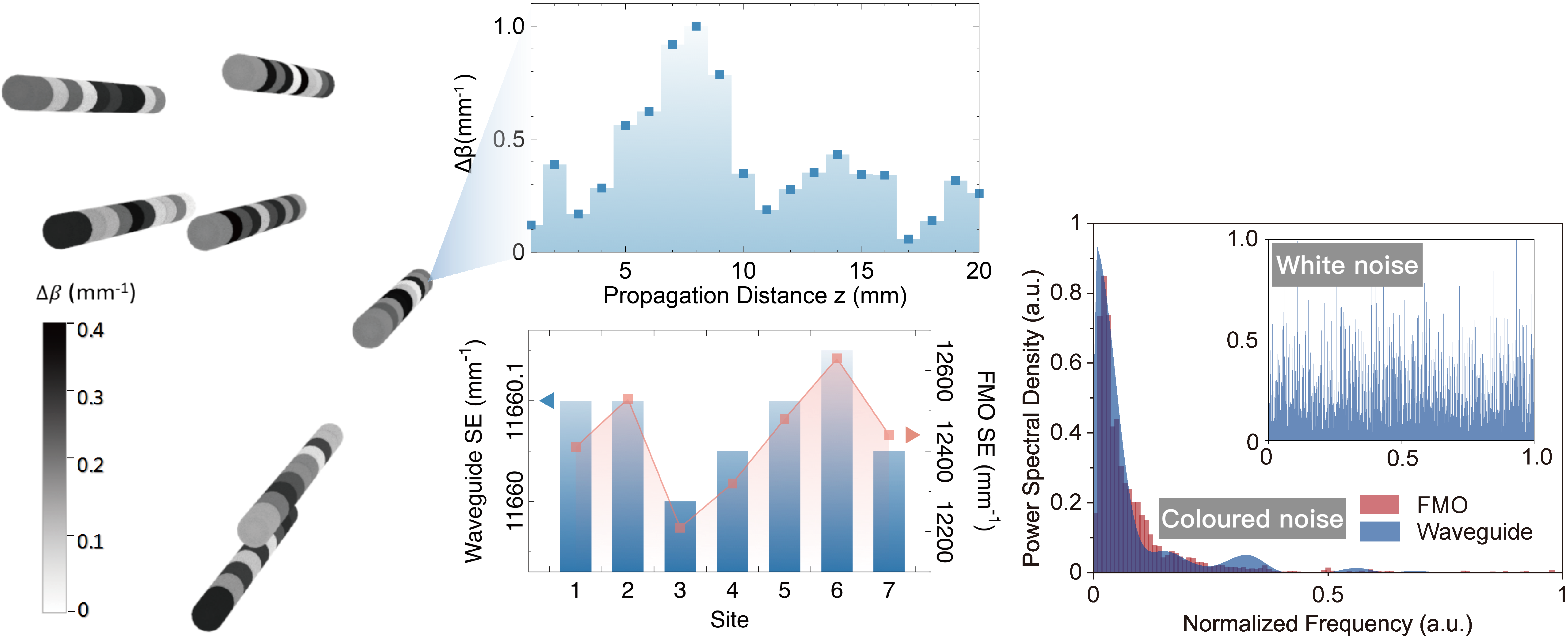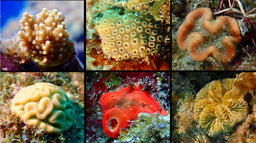Quantum simulation of photosynthetic energy transport in green sulfur bacteria based on a three-dimensional light quantum chip
Published in Bioengineering & Biotechnology and Physics

Explore the Research

Simulating photosynthetic energy transport on a photonic network - npj Quantum Information
npj Quantum Information - Simulating photosynthetic energy transport on a photonic network
The study of quantum phenomena in living organisms is an important application of quantum modelling. Theories related to quantum biology date back to the early days of the establishment of quantum mechanics, but only in recent years have quantum effects been observed in the pigment-protein complex Fenna-Matthews-Olsen (FMO) inside green sulfur bacteria. Many theoretical studies now regard the energy transfer process in the FMO complex as a quantum stochastic walk in an open quantum system, i.e., the FMO complex transfers energy between seven bacteriorhodopsin (BChl) molecules until the energy reaches the reaction centre. The proteins that surround the FMO complex build an environment containing classical noise.
Based on the ability of the three-dimensional (3D) integrated photonic chip to precisely regulate Hamiltonians, the group of Xian-Min Jin and Hao Tang at the School of Physics and Astronomy, Shanghai Jiao Tong University, has accurately mapped the pigment-protein complexes of Green Sulfur Bacteria (GSB) in terms of their coupling, on-site energy, coloured noise, recombination energy, vibrational assistances, exciton transfer, etc., and achieved quantum simulation of photosynthetically active energy transfer of GSB, which deepens the discussion of environment-assisted quantum transports.
"Quantum simulation of energy transport in FMOs using a quantum physics system faces several challenges," said Hao Tang, one of the co-first authors. One is that the quantum system is required to completely map the Hamiltonian of the seven molecules in the structure of a real FMO complex, including the coupling coefficients of the seven molecules as well as the on-site energies of each molecule. However, due to experimental constraints, only a small number of sites were qualitatively demonstrated in the past. Secondly, to explore the effect of environment-introduced noise on energy transport, it is necessary to take into account the real environmental energy spectrum. Thirdly, in recent years, the biological research on photosynthetic energy transport involves some cutting-edge phenomena and concepts, such as exciton transfer and vibrational assistance, which need to be mapped and explored in quantum simulation studies.
The research team have carried out sufficient experimental work on FMO energy transport based on a 3D optical quantum chip. By precisely designing the 3D waveguide array configuration, the non-diagonal terms in the Hamiltonian representing intermolecular coupling are mapped into the system. Meanwhile, the waveguide propagation constants are tuned to achieve different static values of the seven diagonal elements corresponding to the different on-site energies of the seven molecules, and the diagonal terms are dynamically tuned to achieve the introduction of non-Markovian coloured noise detuning terms.

Based on the experimental model of waveguide array modulation, the research team have established a theoretical mapping of energy transport for simulated organisms. "The experiment model is shown to explore the correspondence between recombination energy, vibrational assistance in energy transport, exciton transfer, energy localisation and other biological concepts," said Xiao-Wen Shang, one of the co-first authors. The correspondence between recombination energy and experimentally tunable noise amplitude is established based on the linear relationship between recombination energy and noise variance. Moreover, an assisted vibrational mode waveguide is set up in the model to demonstrate the facilitating effect of vibrational modes on energy transfer during early coherence time. On the contrary, large on-site energy gaps or coloured noise detuning frequencies have a suppression effect on exciton transfer and lead to energy localisation.
In the meanwhile, the research team prepared several sets of photonic waveguide arrays based on femtosecond-laser direct-writing as quantum simulation experimental samples for mapping FMO complexes, and the different samples all mapped the FMO coloured noise spectral features, but differed in amplitude. The effect of different coloured noise amplitudes on the energy transport efficiency is observed, and the optimal efficiency is achieved at a specific noise amplitude, which is consistent with the theoretical derivation of exciton transfer and energy localisation.
.png)
The experimental work is an important experimental observation of ENAQT, which deepens the understanding of the mechanism of quantum processes in organisms that require energy transport, such as photosynthesis. Based on the waveguide-modulated Hamiltonians demonstrated in this work, this experimental quantum tool can also be applied in simulation of photosynthetic energy transport in more chlorophylls such as PE545, PE555, PC645, etc. Effective manipulation of energy transport in quantum systems based on flexible modulation of coloured noise is also of broad significance for the field of quantum information.
The Institute of Quantum Integrated Technologies (IQIT) in Shanghai Jiao Tong University led by Prof. Xianmin Jin covers a broad research spectrum ranging from quantum computing, quantum communication and quantum metrology with special focus on the subject of building large-scale quantum systems, via integrated photonics and quantum memory.
Follow the Topic
-
npj Quantum Information

The scope of this journal spans across all relevant disciplines, fields, approaches and levels and so considers outstanding work ranging from fundamental research to applications and technologies.
Your space to connect: The Polarised light Hub
A new Communities’ space to connect, collaborate, and explore research on Light-Matter Interaction, Optics and Photonics, Quantum Imaging and Sensing, Microscopy, and Spectroscopy!
Continue reading announcementRelated Collections
With Collections, you can get published faster and increase your visibility.
Algorithms, Protocols and Architectures for Early Fault Tolerance
Publishing Model: Open Access
Deadline: Jun 25, 2026
Quantum-Enabled Bioimaging
Publishing Model: Open Access
Deadline: May 04, 2026





Please sign in or register for FREE
If you are a registered user on Research Communities by Springer Nature, please sign in